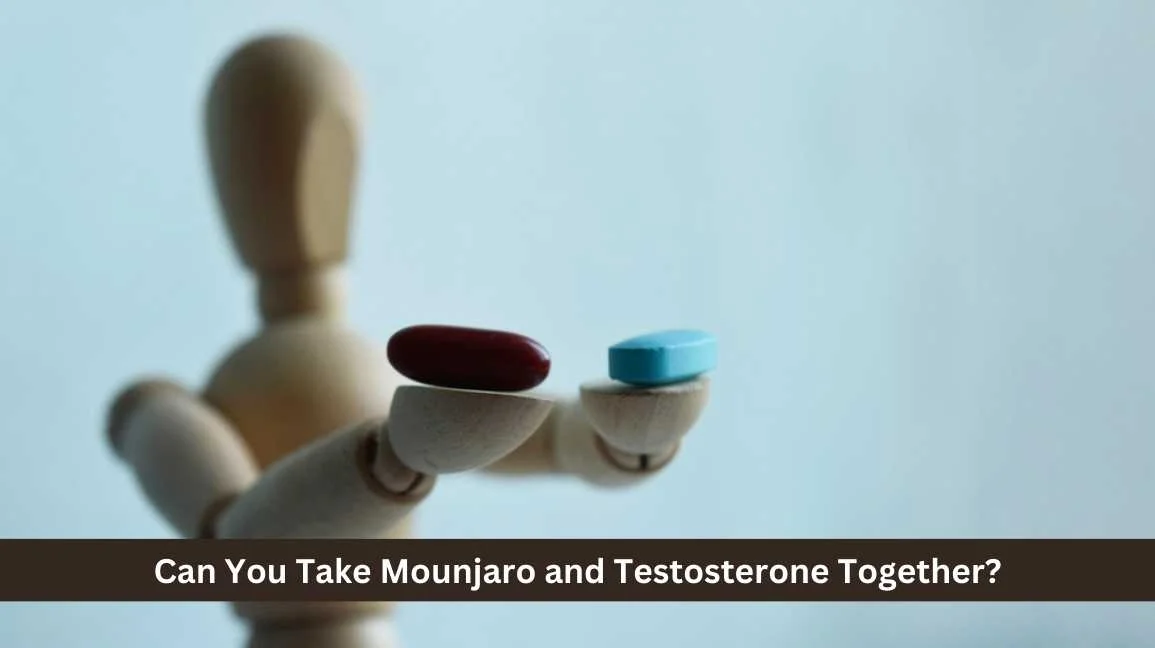Can You Take Clomid And Testosterone Together

The quest for hormonal optimization, particularly among men, has led to increasing interest in combined therapies involving Clomid (clomiphene citrate) and testosterone. But this approach isn't without its complexities and potential risks. Is taking Clomid and testosterone together a safe and effective strategy, or a potentially harmful shortcut?
This article delves into the science behind this combination, exploring its potential benefits, risks, and what the available research suggests. We'll examine how each medication works, the rationale for using them together, expert opinions, and the crucial considerations for anyone contemplating this treatment strategy. Understanding the nuances of this approach is essential for making informed decisions about one's health.
Understanding Clomid and Testosterone: Individual Roles
Clomid, generically known as clomiphene citrate, is a selective estrogen receptor modulator (SERM). It's primarily used in women to induce ovulation, but it also has applications in men with low testosterone levels. Clomid works by blocking estrogen receptors in the hypothalamus, a key area of the brain involved in hormone regulation.
This blockade triggers the release of gonadotropin-releasing hormone (GnRH), which in turn stimulates the pituitary gland to produce luteinizing hormone (LH) and follicle-stimulating hormone (FSH). LH stimulates the testes to produce testosterone. FSH supports sperm production.
Testosterone, on the other hand, is the primary male sex hormone. It plays a crucial role in developing and maintaining male characteristics, such as muscle mass, bone density, and libido. Testosterone therapy typically involves administering exogenous testosterone, either through injections, gels, patches, or other methods.
The Rationale Behind Combining Clomid and Testosterone
The idea behind combining Clomid and testosterone stems from the desire to address low testosterone levels while preserving fertility. Testosterone replacement therapy (TRT) can suppress the body's natural testosterone production. This suppression can lead to decreased sperm production and potential infertility.
Clomid, by stimulating the body's own testosterone production, is thought to potentially mitigate the negative effects of TRT on fertility. Some physicians prescribe Clomid alongside testosterone to maintain or improve sperm production. They aim to balance the benefits of testosterone supplementation with the desire to preserve reproductive function.
This combination is particularly relevant for younger men experiencing hypogonadism (low testosterone) who still wish to have children in the future. It’s also sometimes considered by men who experience side effects from TRT alone.
Potential Benefits of Combined Therapy
One potential benefit is the maintenance of fertility while addressing hypogonadism symptoms. Clomid may help prevent the shutdown of sperm production that can occur with TRT alone. This is crucial for men who desire to preserve their reproductive capabilities.
Some studies suggest that Clomid can be effective in raising testosterone levels in certain men with secondary hypogonadism. This means the low testosterone is caused by a problem in the pituitary gland or hypothalamus. For those individuals, it can be an alternative to direct testosterone replacement.
It may also help manage side effects associated with TRT. Some men experience side effects from TRT like testicular shrinkage. Combining it with Clomid is thought to potentially lessen these effects by maintaining some level of endogenous testosterone production.
Potential Risks and Side Effects
Combining Clomid and testosterone isn't without its risks. One concern is the potential for overstimulation of testosterone production. This can lead to elevated estrogen levels. Elevated estrogen levels can cause side effects such as mood swings, gynecomastia (breast enlargement), and fluid retention.
Clomid itself can cause side effects, including vision changes, headaches, and mood disturbances. These side effects need to be considered when evaluating the risk-benefit profile of combined therapy. There may be interaction with other medications.
Another risk involves the lack of long-term data on the safety and efficacy of this combined approach. While some studies have shown promising results, more extensive research is needed to fully understand the long-term implications. A careful monitoring by a physician is important.
Expert Opinions and Research Findings
The medical community is divided on the routine use of Clomid and testosterone together. Some endocrinologists and urologists support this approach in carefully selected patients. They emphasize the importance of thorough evaluation and monitoring to minimize risks.
Other experts express caution, highlighting the limited evidence base and potential for adverse effects. They advocate for individualized treatment plans based on a comprehensive assessment of the patient's medical history, hormone levels, and fertility goals. They emphasized the importance of the risk and benefit of this combination therapy.
Research findings on the combined use of Clomid and testosterone are still evolving. Some studies have shown that Clomid can effectively maintain sperm production in men on TRT. Other studies have yielded less conclusive results, highlighting the need for further investigation.
Important Considerations and Guidelines
If considering this combined therapy, consulting with a qualified healthcare professional is crucial. A thorough evaluation of your hormone levels, medical history, and fertility goals is essential. This will help determine if this approach is appropriate for you.
Close monitoring during treatment is necessary to detect any potential side effects or complications. Regular blood tests to assess hormone levels and liver function are important. Adjustments to the dosage may be needed based on individual response.
It's also essential to be aware of the potential risks and benefits before starting treatment. Open communication with your healthcare provider is key to making informed decisions and managing expectations.
The Future of Clomid and Testosterone Combination Therapy
Further research is needed to fully understand the long-term effects and optimal protocols for combining Clomid and testosterone. Larger, well-designed clinical trials are needed to provide more robust evidence.
As our understanding of hormonal regulation and male fertility evolves, more personalized approaches to treatment may emerge. Genetic testing and other advanced diagnostics may help identify individuals who are most likely to benefit from this combination.
Ultimately, the decision to use Clomid and testosterone together should be made on an individual basis. It should also be in consultation with a healthcare professional who is experienced in hormone management and fertility. It should involve careful consideration of the potential risks, benefits, and alternatives.


















